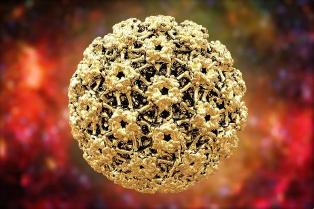
HPV, or human papillomavirus, is one of the most common sexually transmitted diseases in the 21st century. It is easy to catch and impossible to cure. Sounds scary? We answer the most popular questions about this infection in our material!
what kind of virus is this? E re?
HPV is actually as old as the world. It is the one that causes the appearance of warts, papillomas, genital warts and other skin formations.
These viruses were combined into a single group in 1971. The number of HPV species detected is about 600. it is possible that there are actually even more. The only critical difference between these strains is that some of them are low risk onko, others are high risk onko. In modern medical practice, it is not common to check the presence of all 600 types, the main thing is to find out if a person is a carrier of 16 types, 14 of which cause precancerous conditions: 16, 18, 31, 33, 35, 39, 45, 51, 52, 56, 58, 59, 66, 68. The rest - 6 and 11 - are responsible for the formation of genital warts, which also need to be treated. The virus is especially dangerous for women, as it can cause cervical cancer. However, men are also at risk: Genital cancer often develops from the destructive action of HPV within cells.
How is it transmitted?
Sexual and domestic routes. And yet, sexual transmission is the most common. The probability of a woman becoming infected in the first years of sexual activity is more than 50%. The safest way to avoid getting HPV is to abstain from unprotected casual sex and use a condom. However, even a condom does not provide one hundred percent protection, as HPV is transmitted through contact with the mucosa: through kissing, foreplay, and oral sex.
The chance of contracting increases positively with the number of sexual partners: the more active the sex, the more likely you are to be infected with HPV. Home transmission is also possible: when you use someone else’s towel or razor.
If your partner is infected with a virus, then there is a high probability that you have it too. Men with HPV develop genital warts and flat warts on the penis and groin. If you suddenly notice a strange growth of skin, immediately inform your boyfriend and get the right tests.
How do I know if I have HPV?
The easiest way is to get a gynecological stain for HPV and cytology. As we have already noted, only 16 types of virus are controlled. It is possible to suspect that you have the 6th or 11th soybean without tests: if you or your partner have papillomas or genital warts, then it is very likely that you are a carrier of the papillomavirus, and tests will confirm this.
As for high-risk oncogenic viruses, they do not manifest, and it is difficult to visually determine their presence in the body - an analysis is required for cytology, cervical colposcopy and HPV tests. Due to the asymptomatic course of the disease, high-risk oncogenic types are especially dangerous for women who do not undergo the annual PAP (cytological analysis) test by a gynecologist. The course of the disease is asymptomatic, and at this time HPV is embedded in the cell and changes its structure, turning it into a malignancy. Malignant cells help to determine a cytological analysis, which is taken in a routine examination by a gynecologist once every six months or a year. By the way, it is better not to miss them, especially those with HPV.














































































